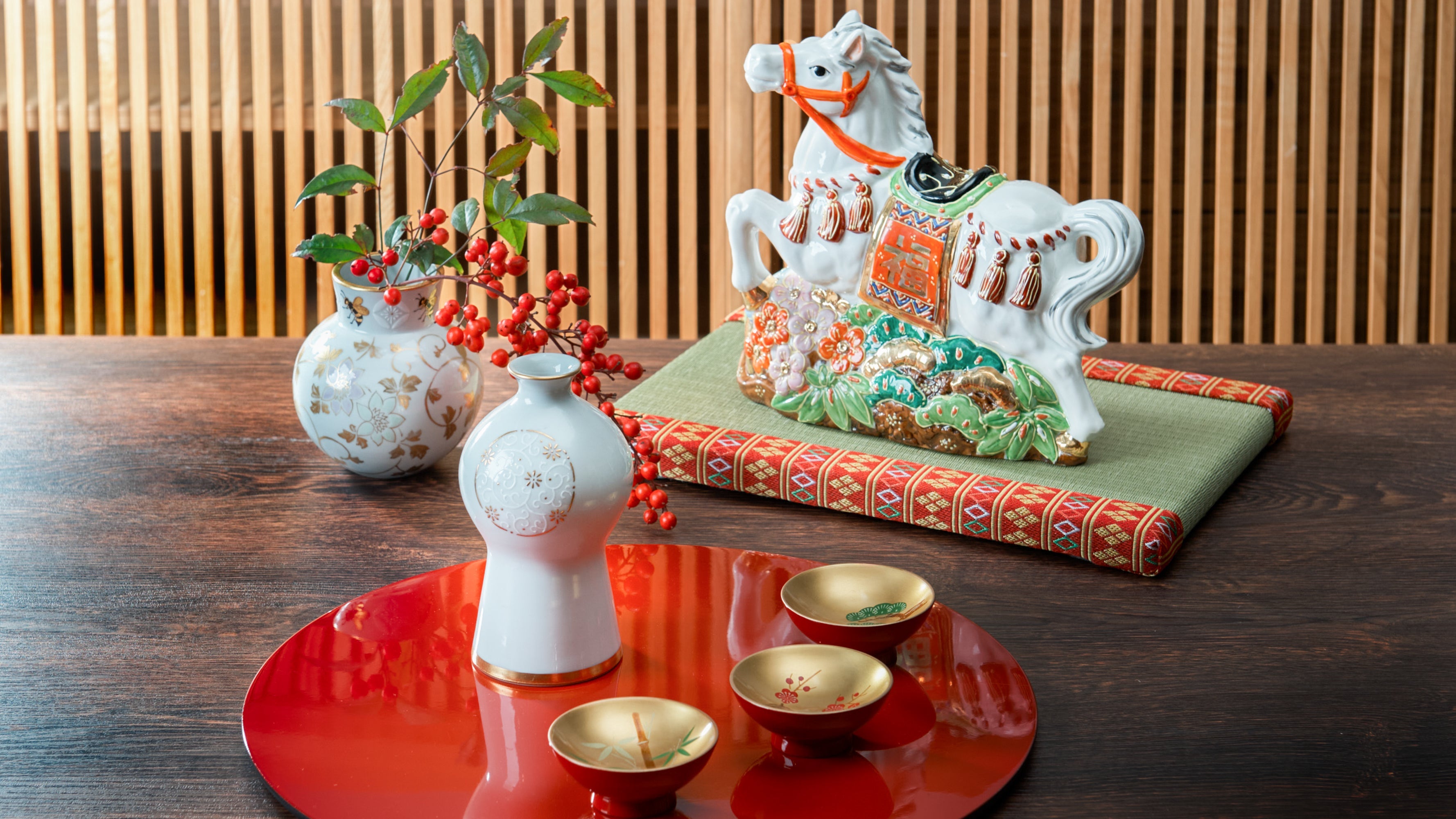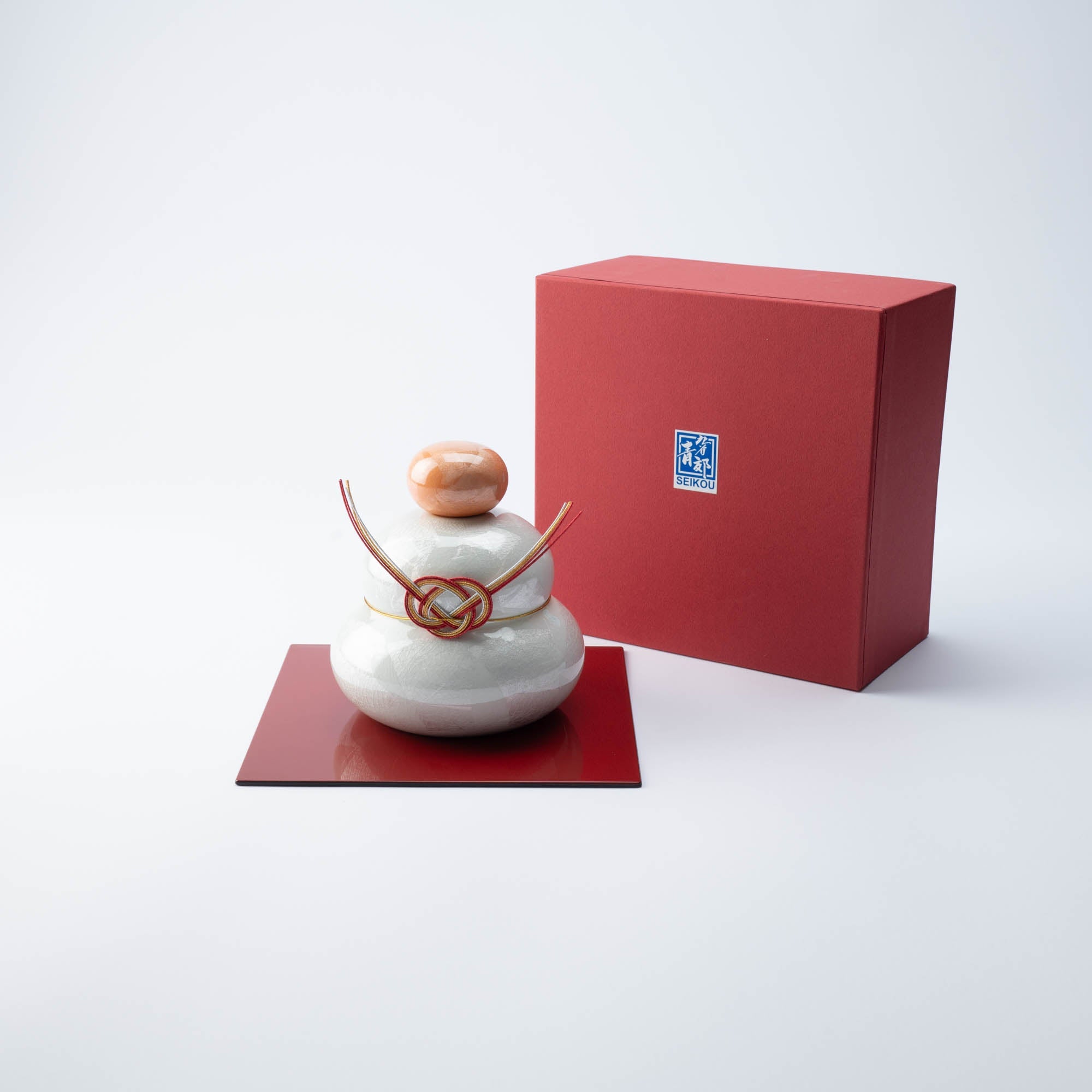
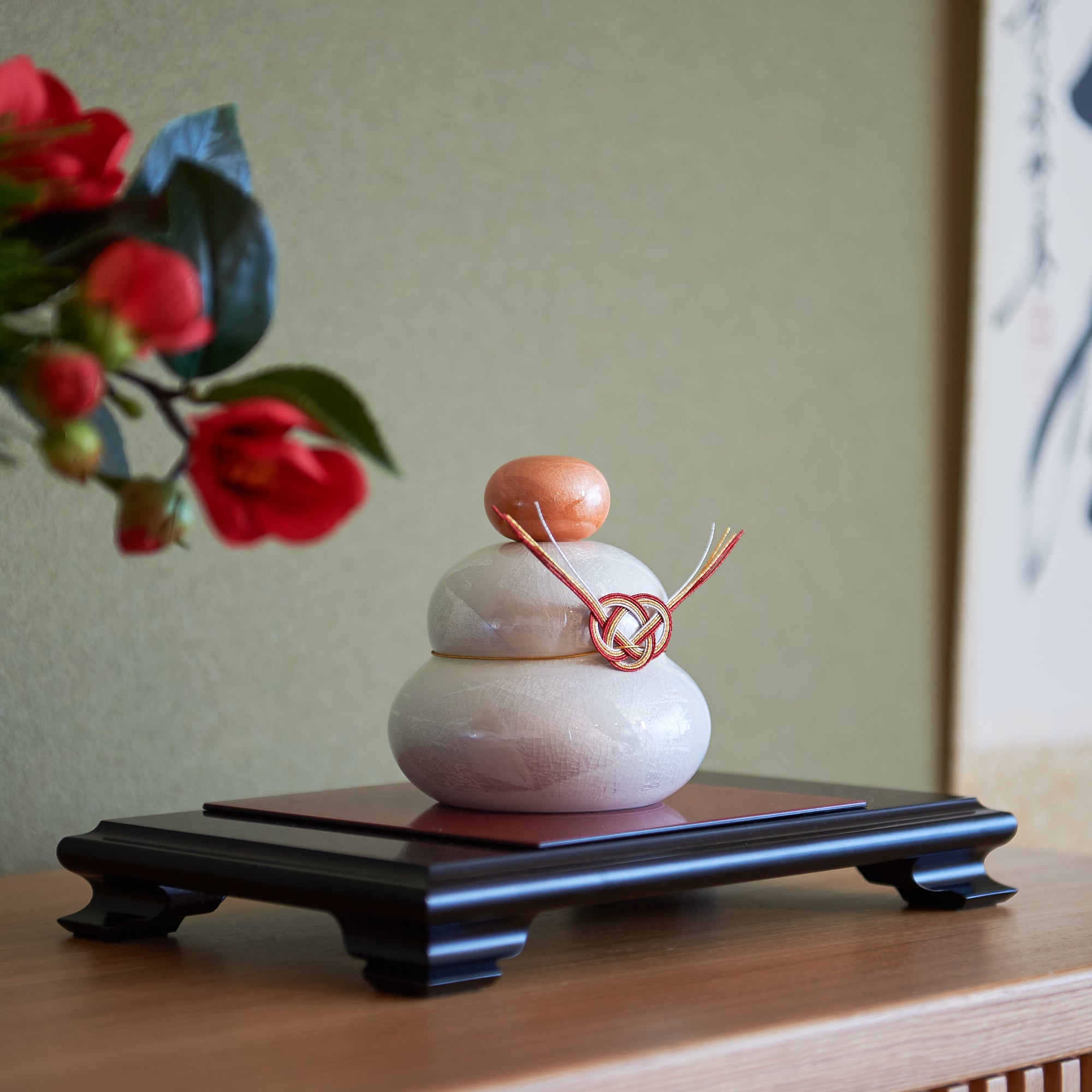

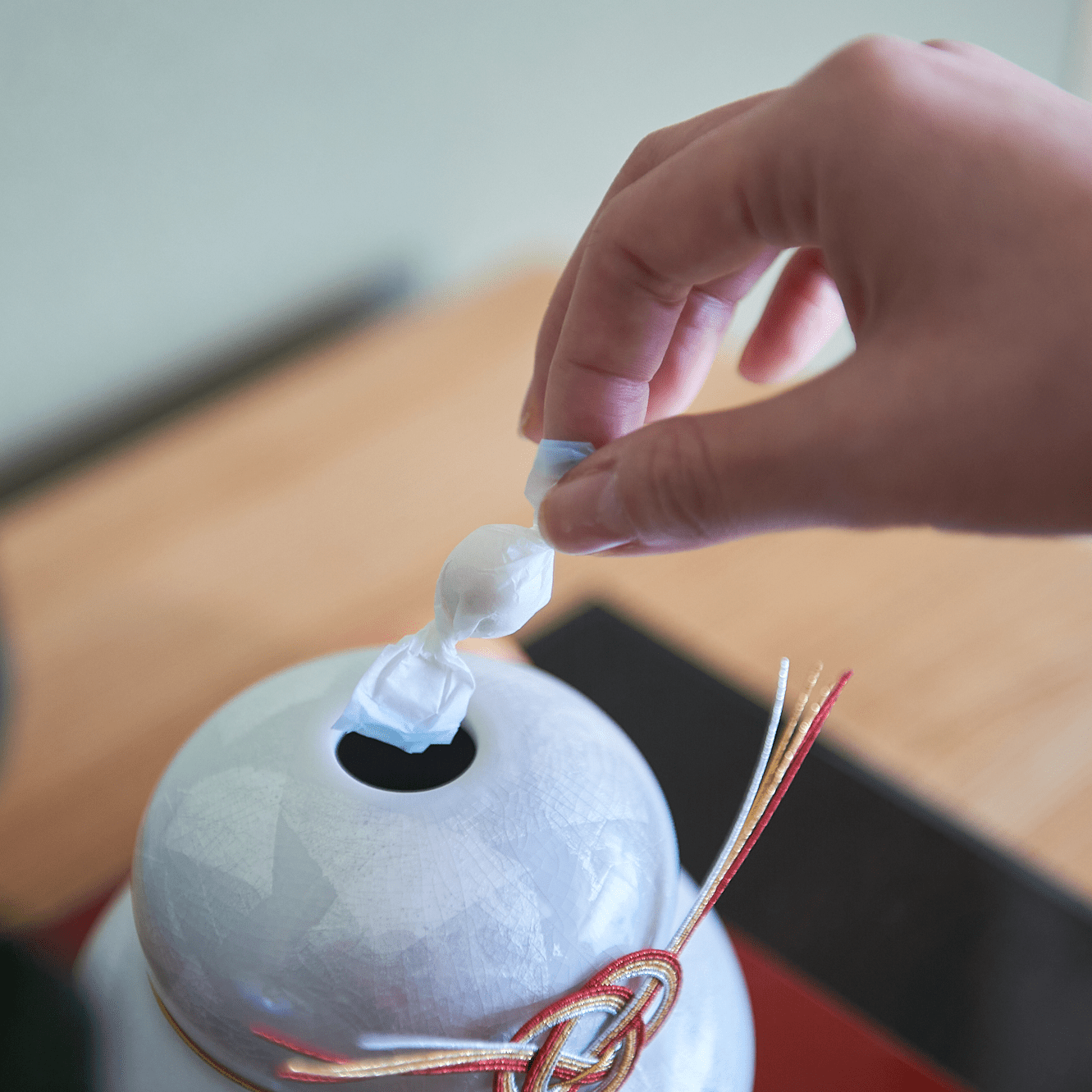
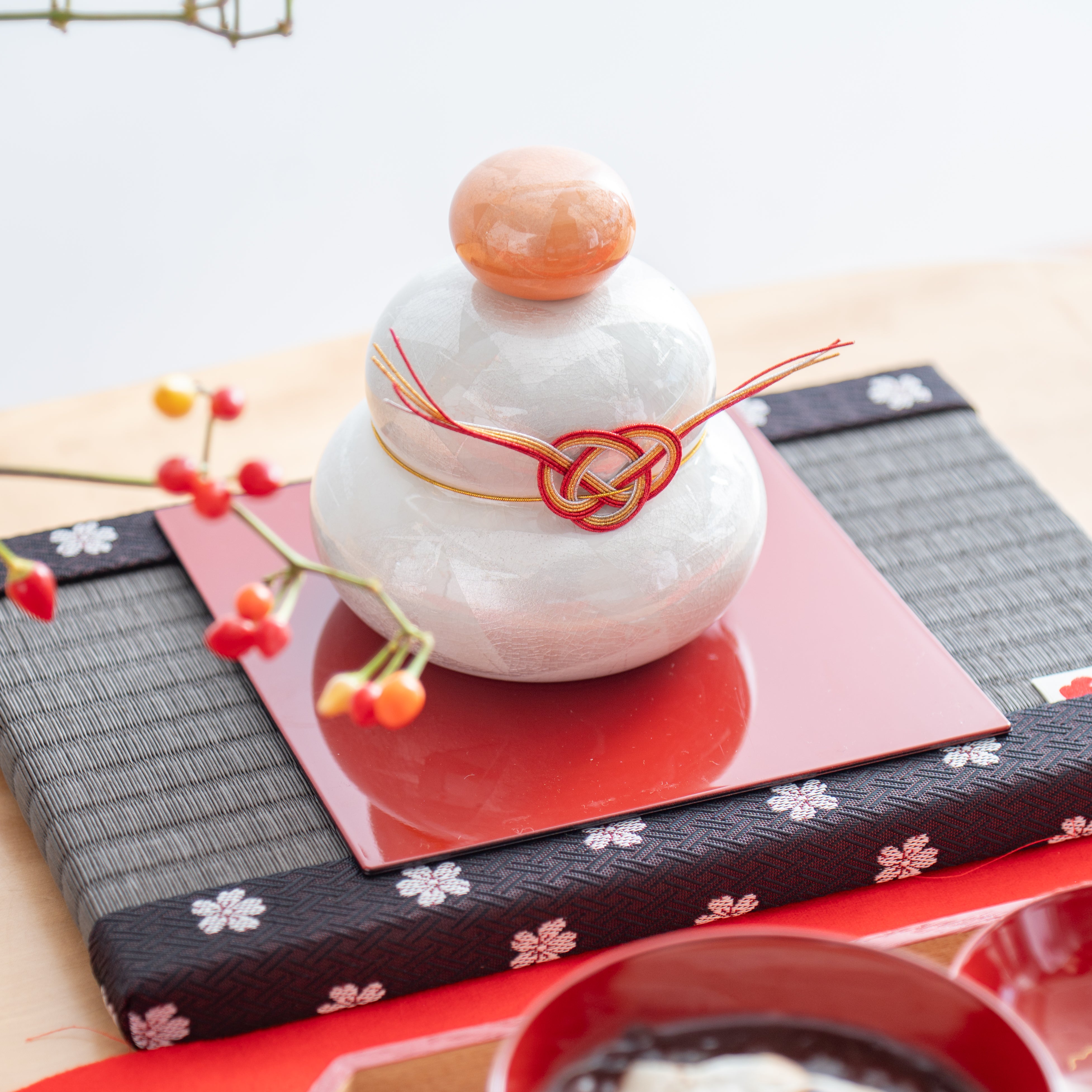
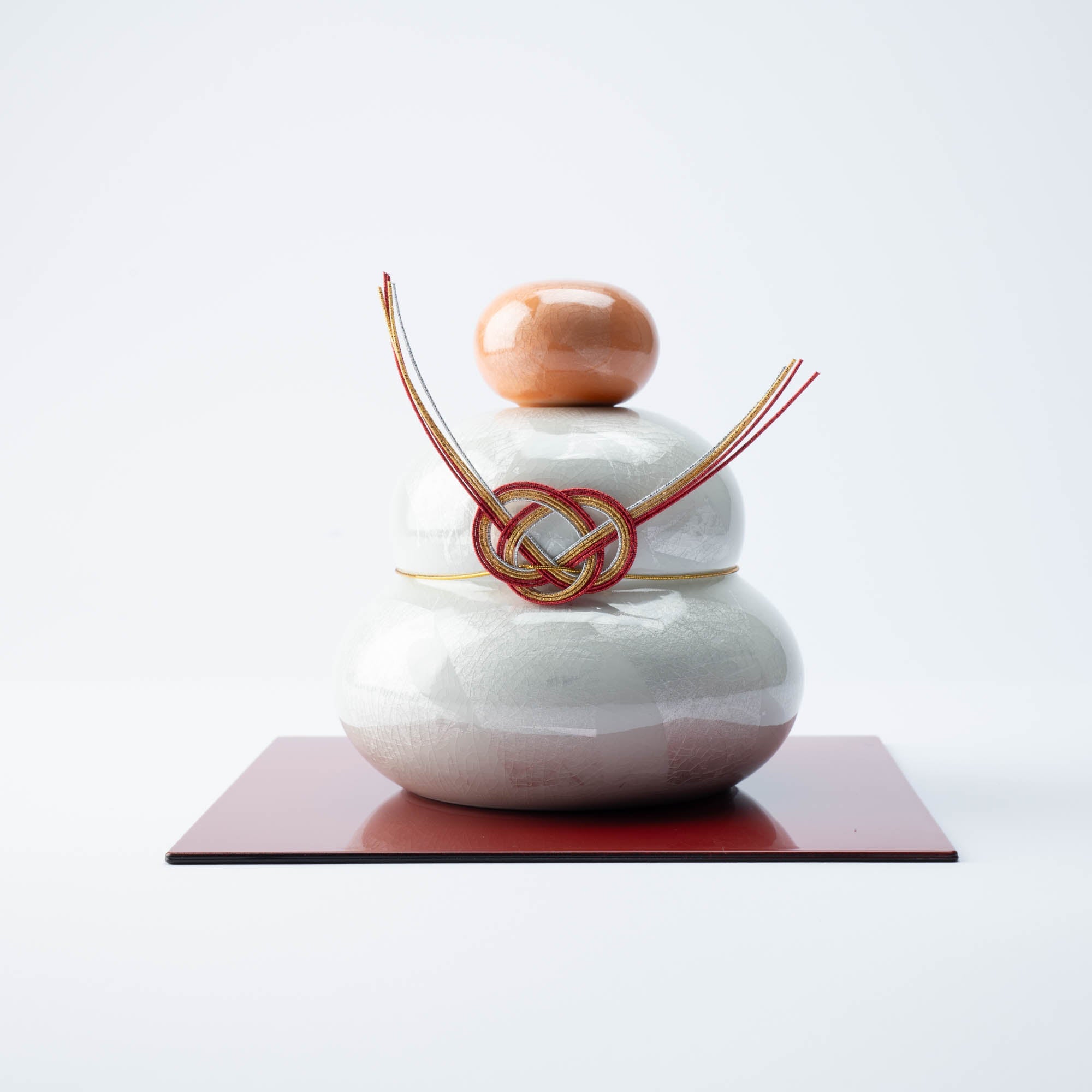
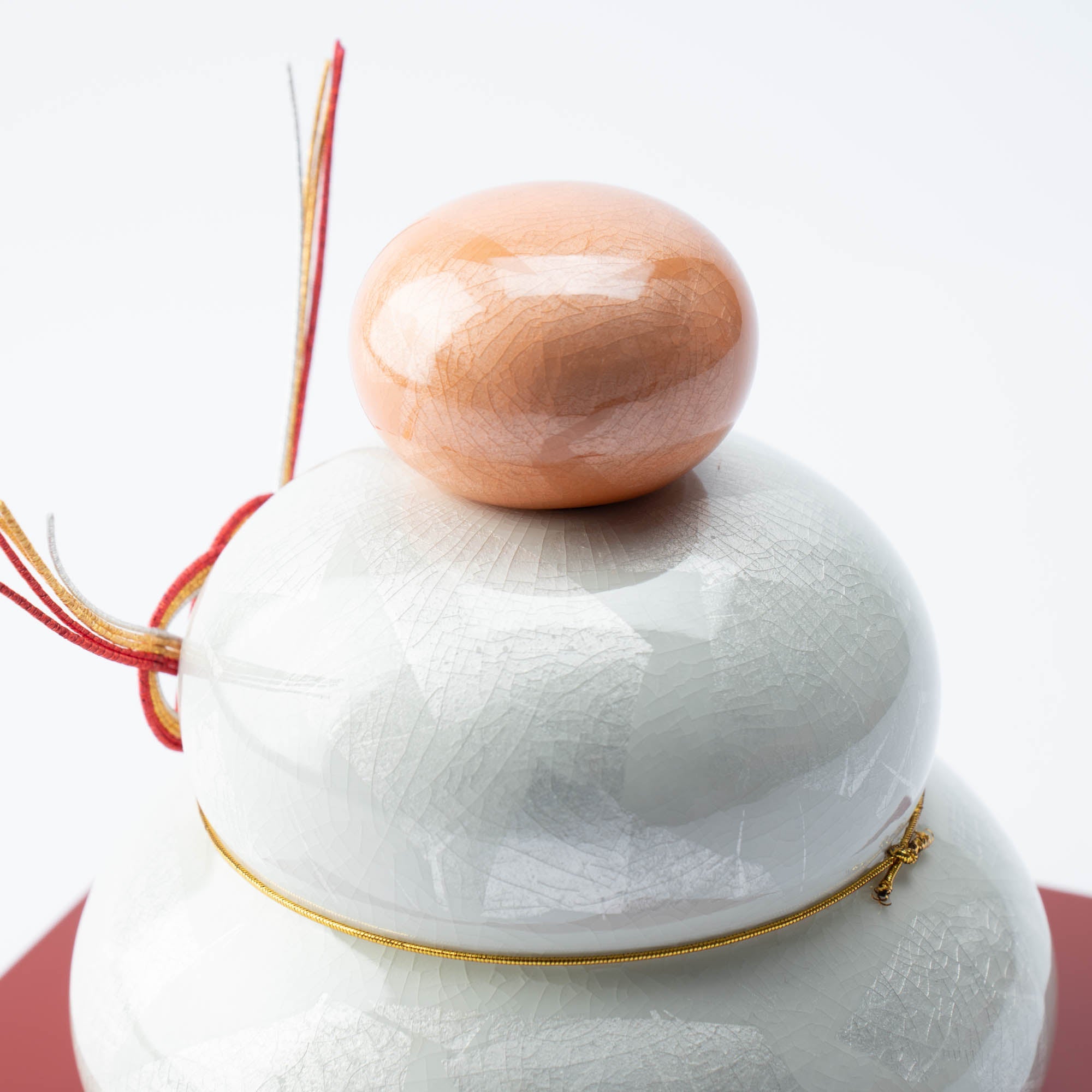
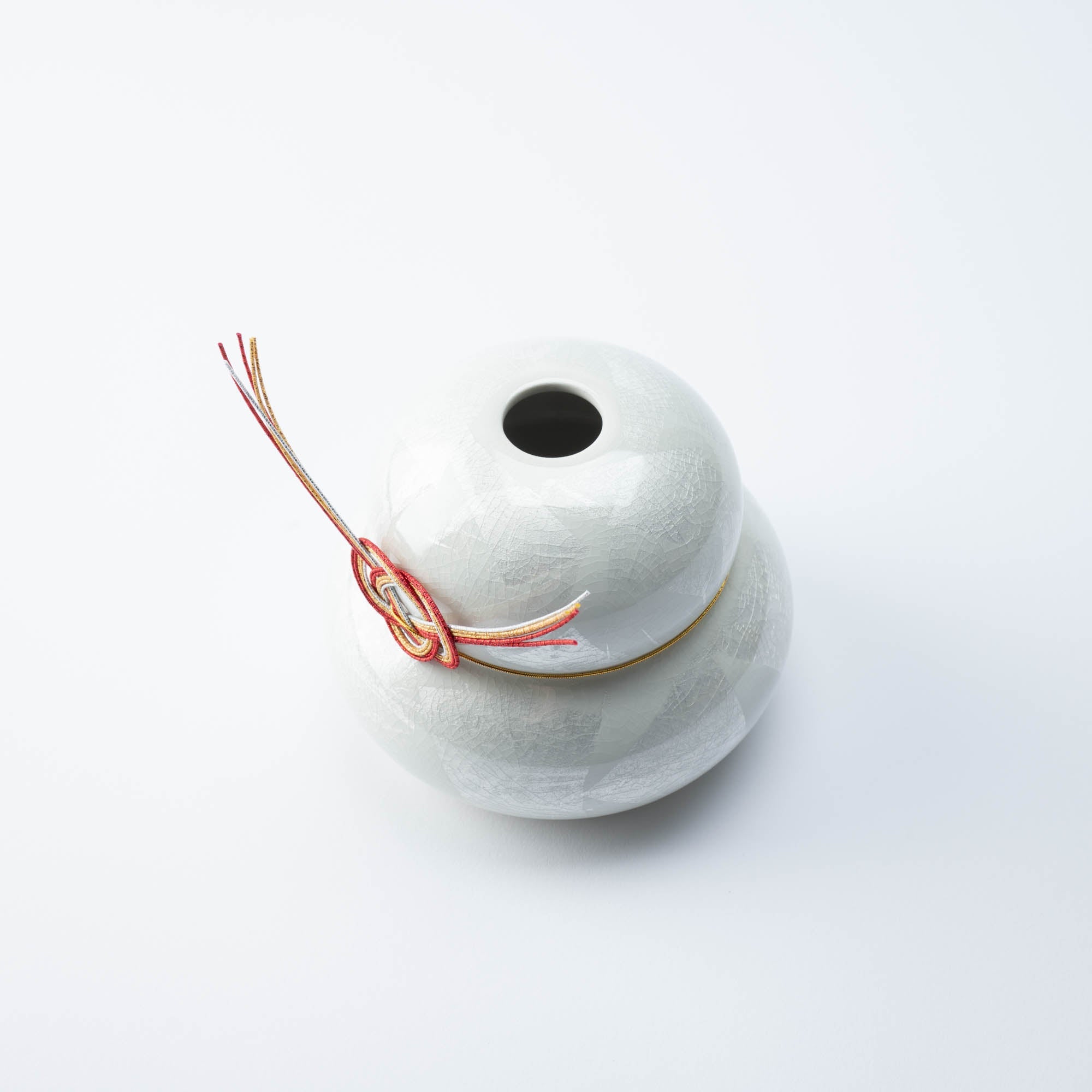
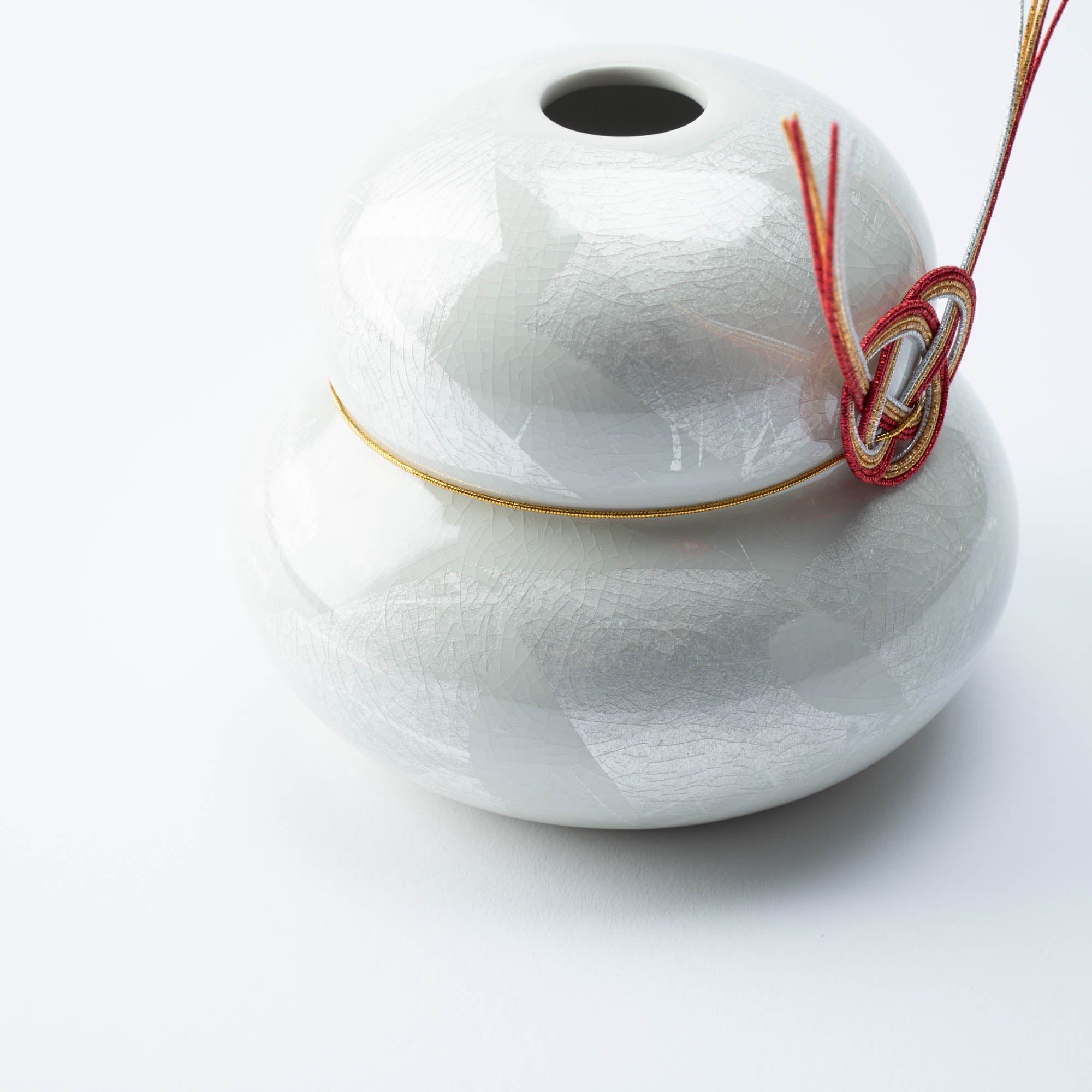
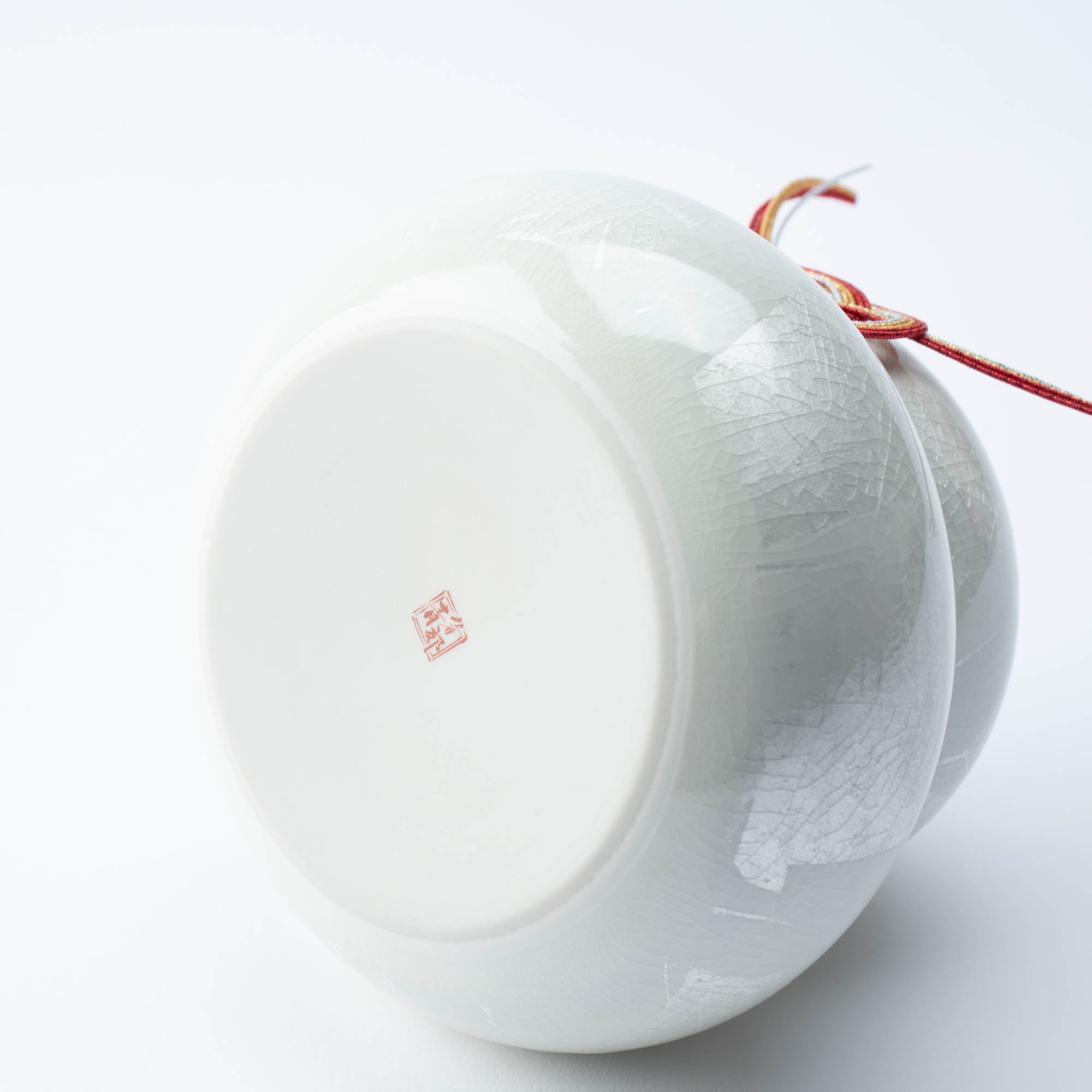
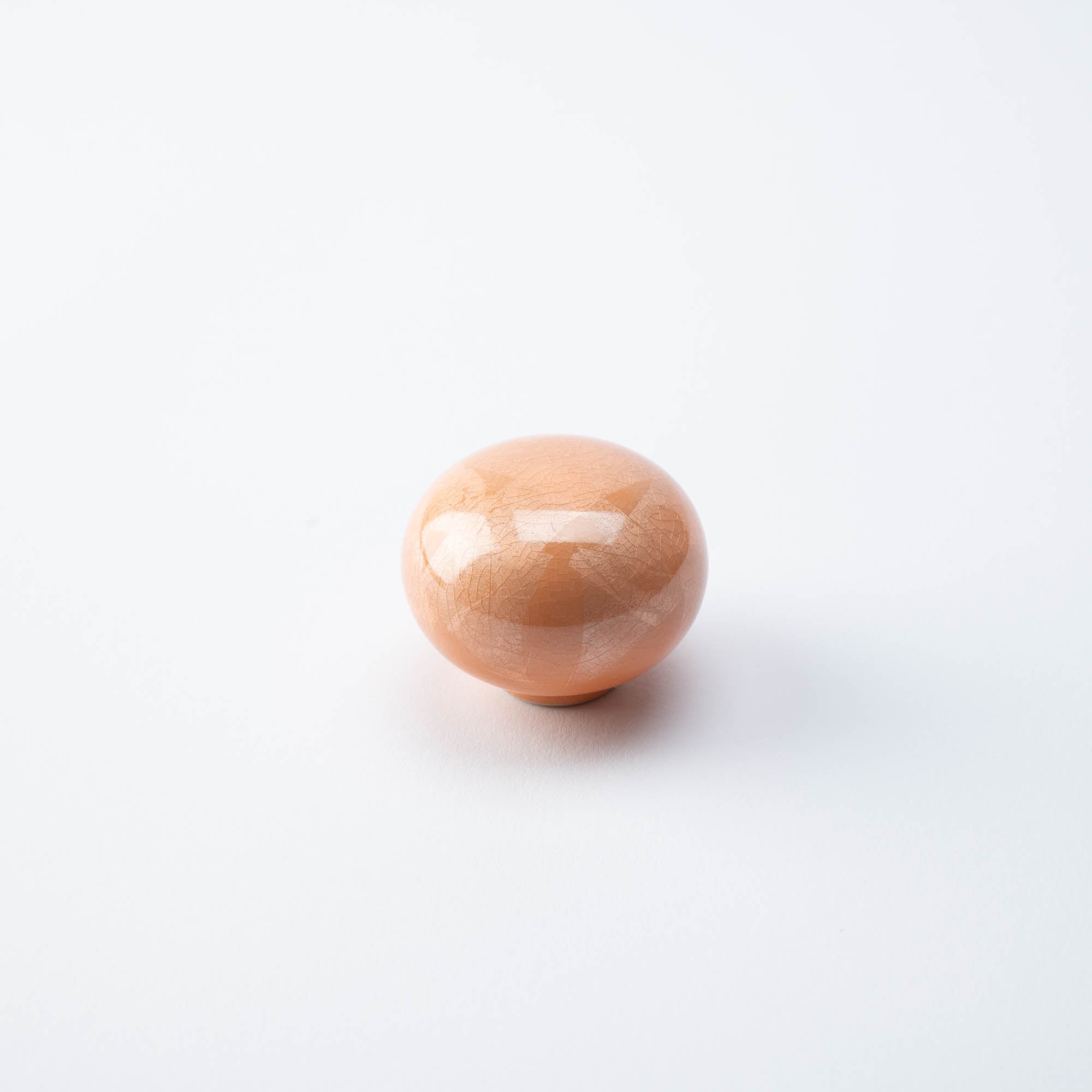
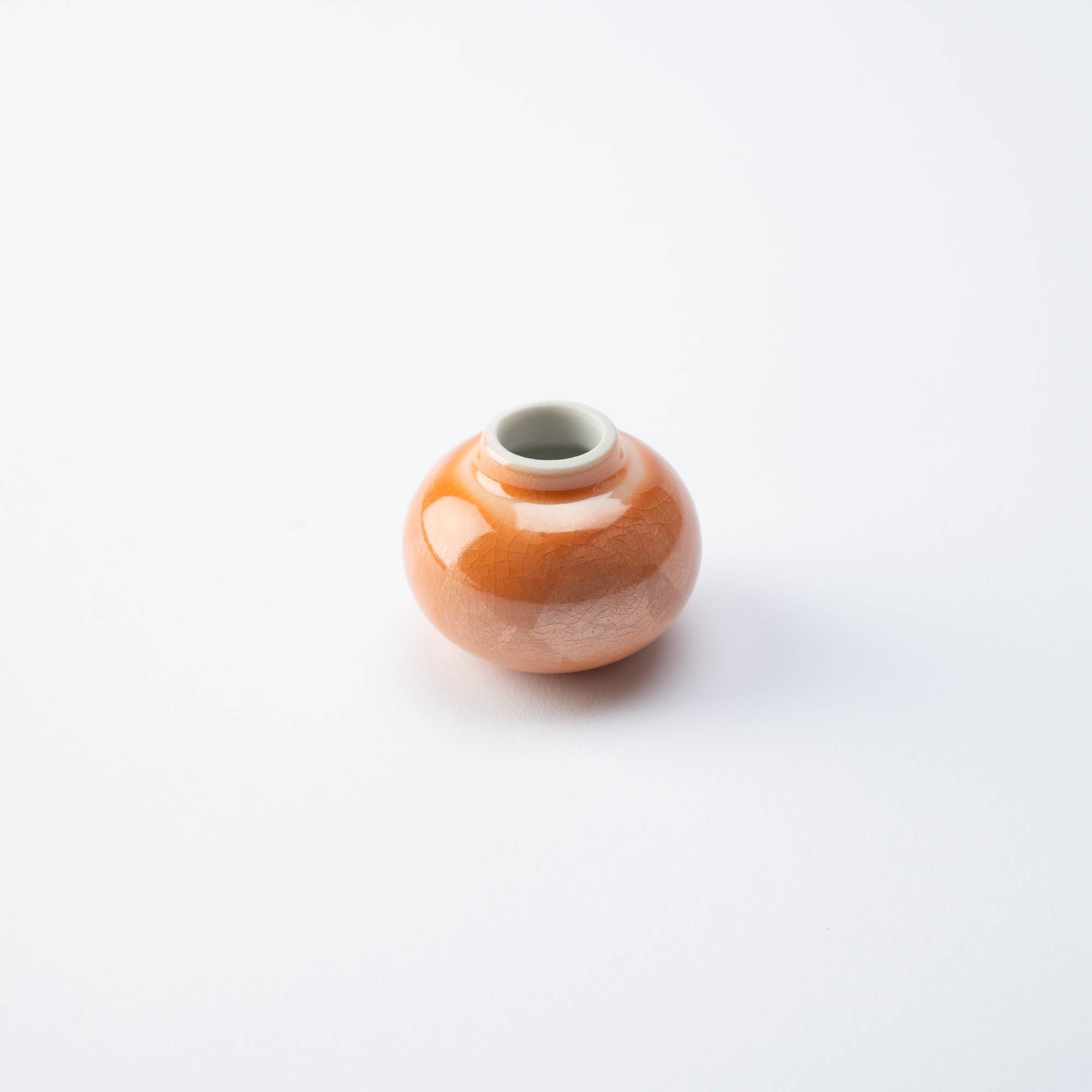
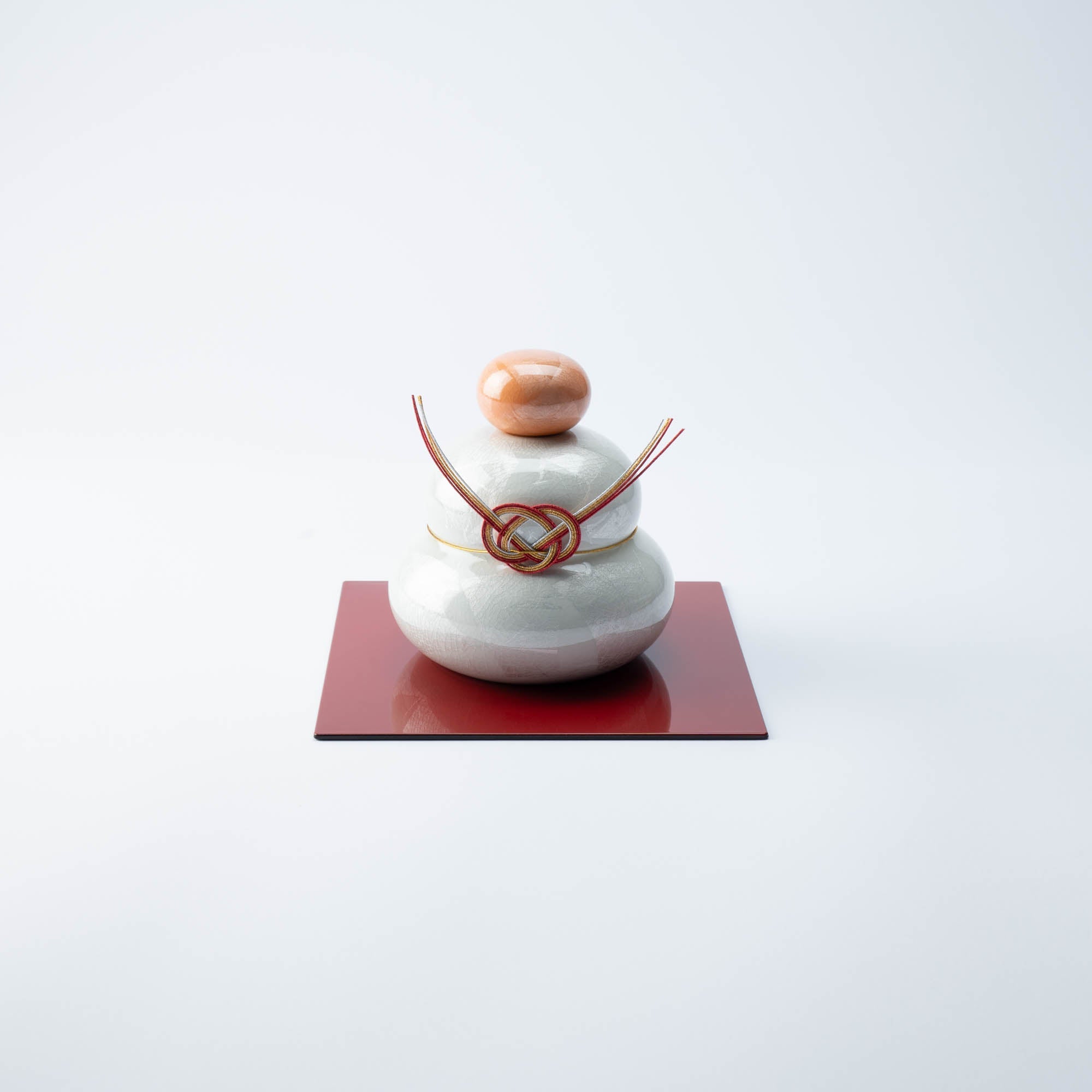
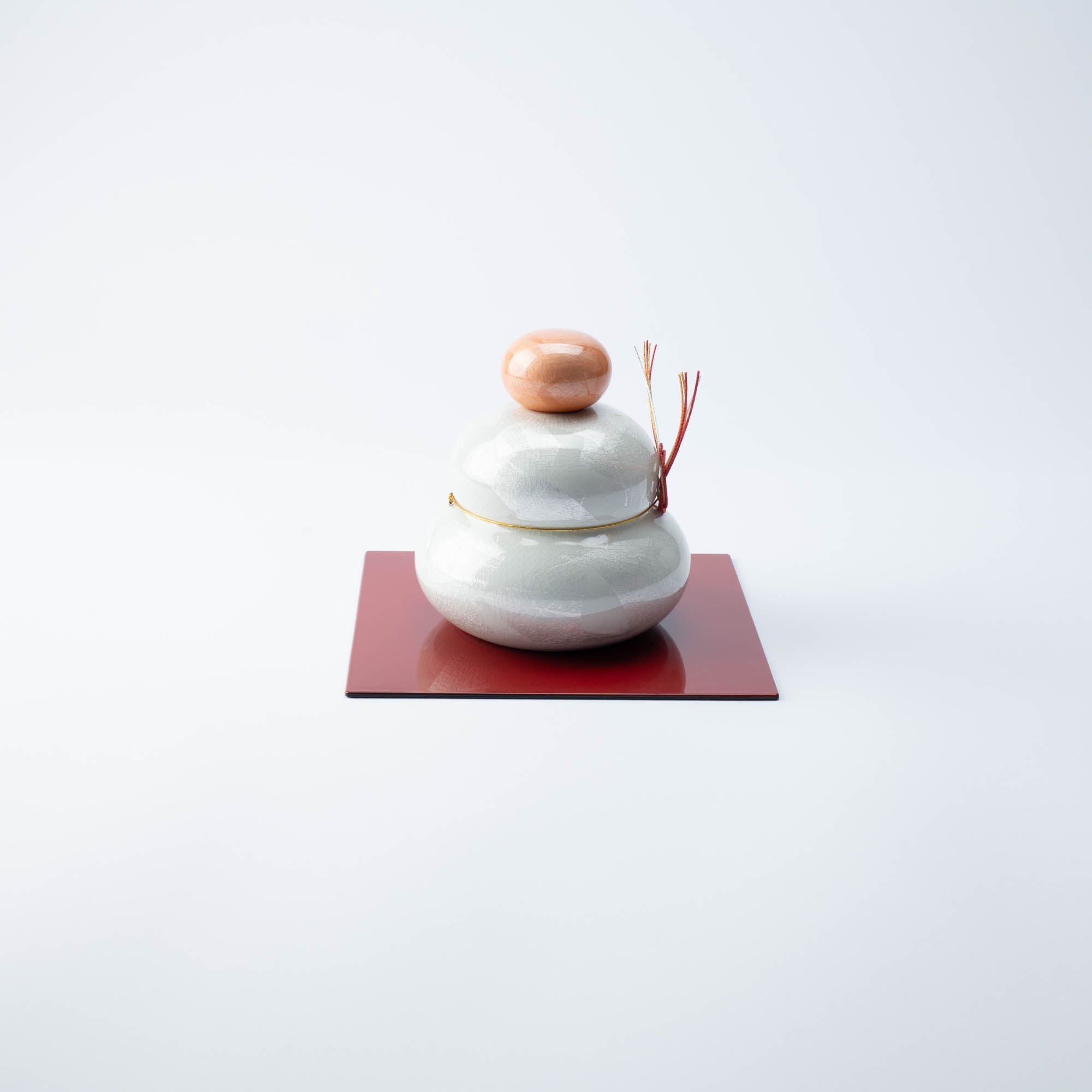
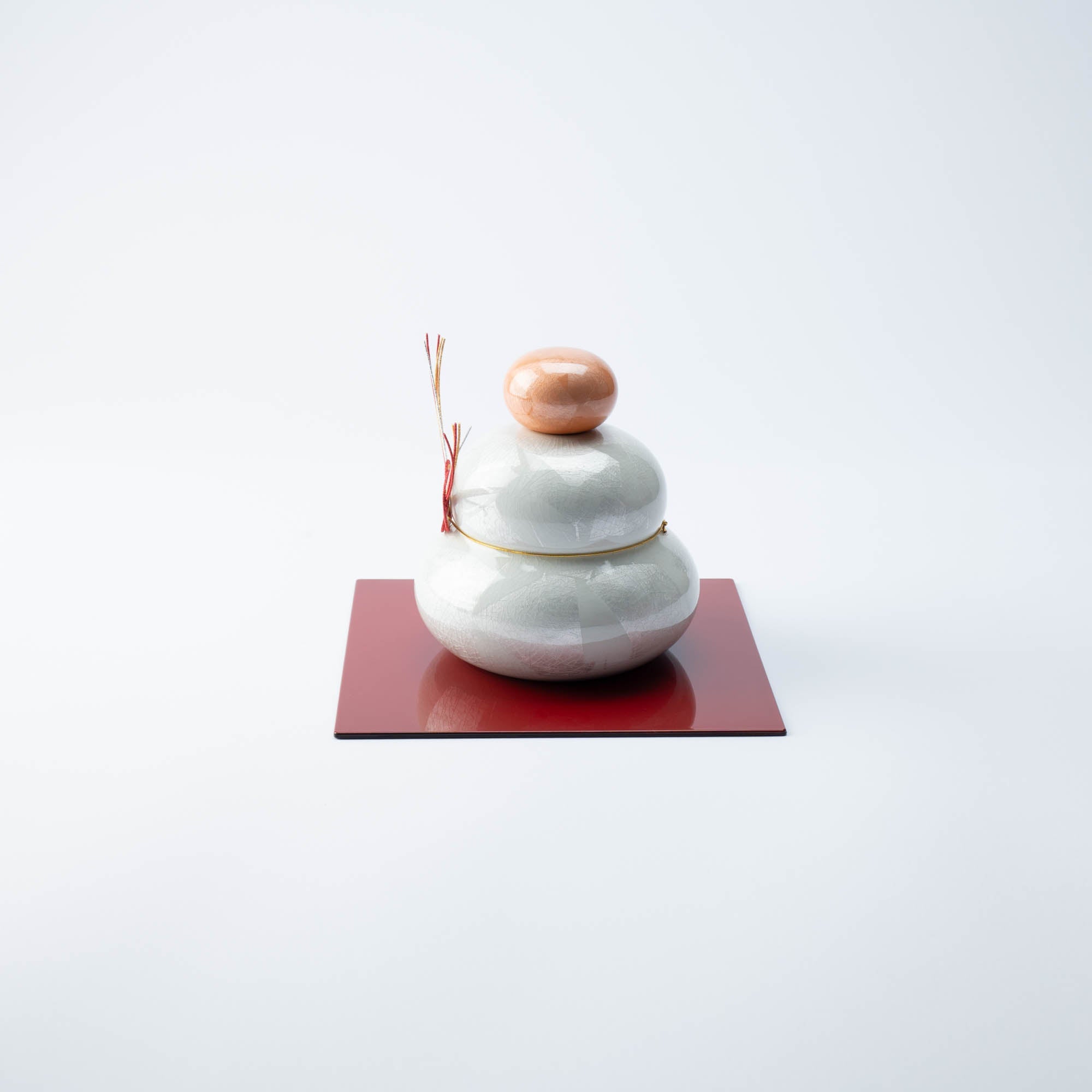
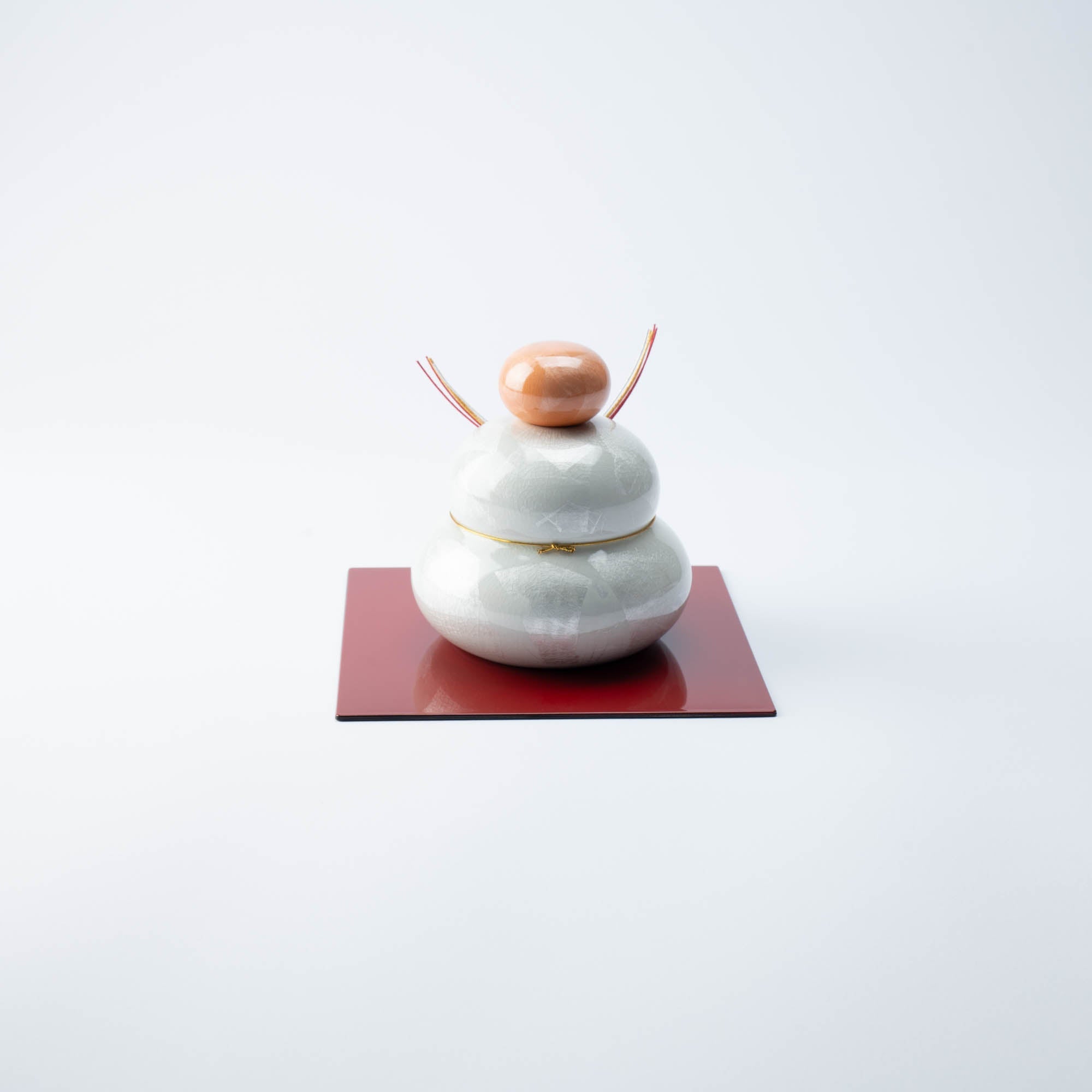
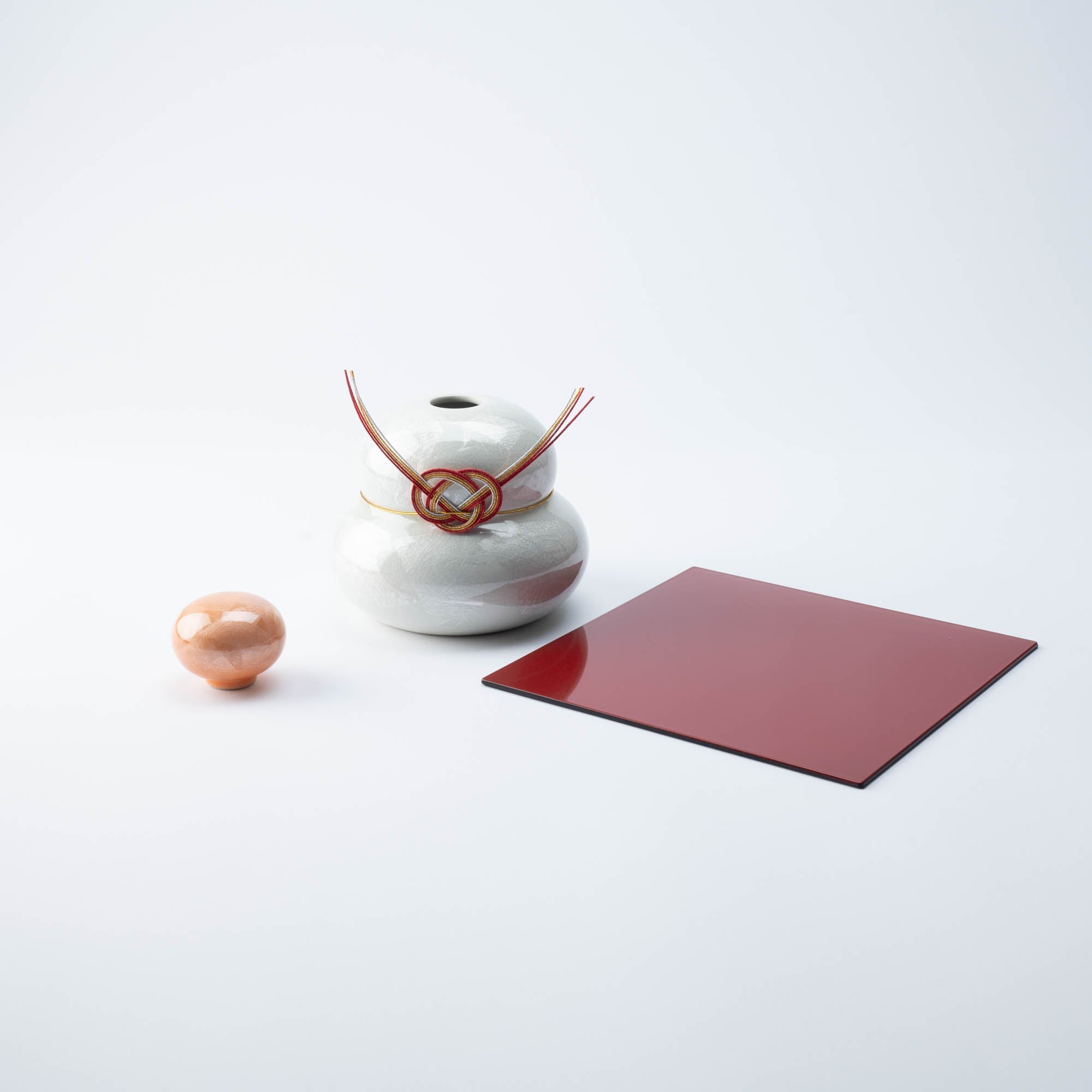
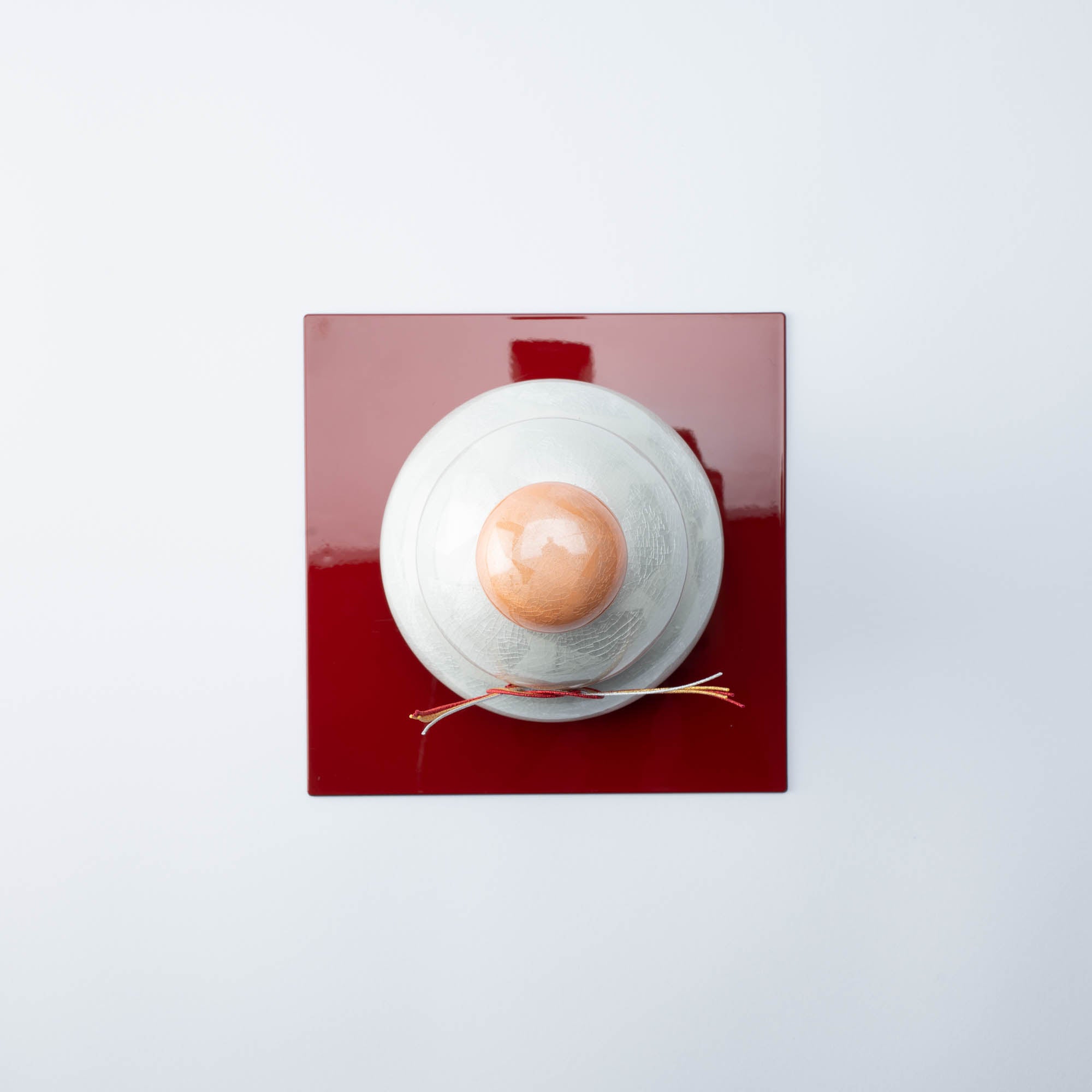
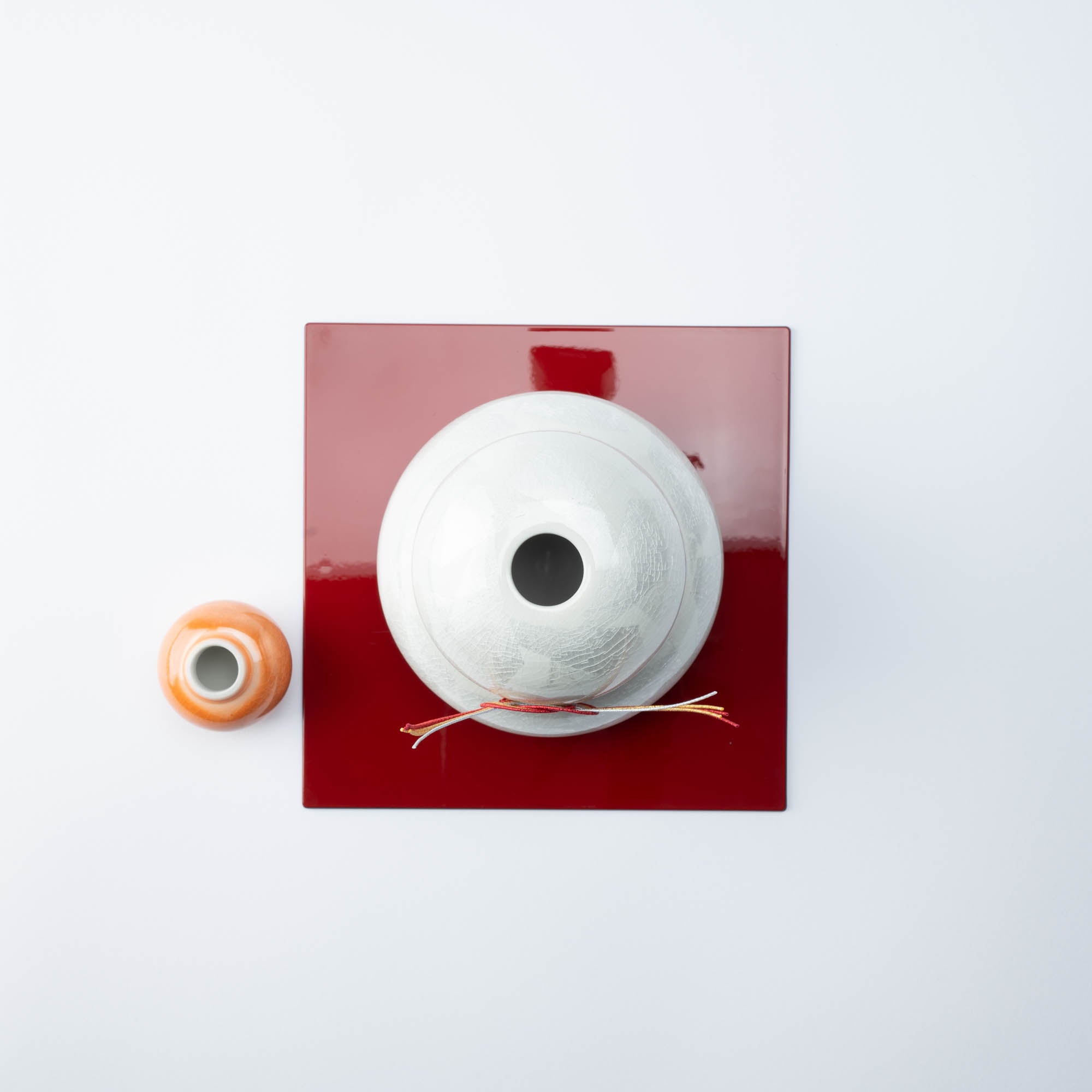
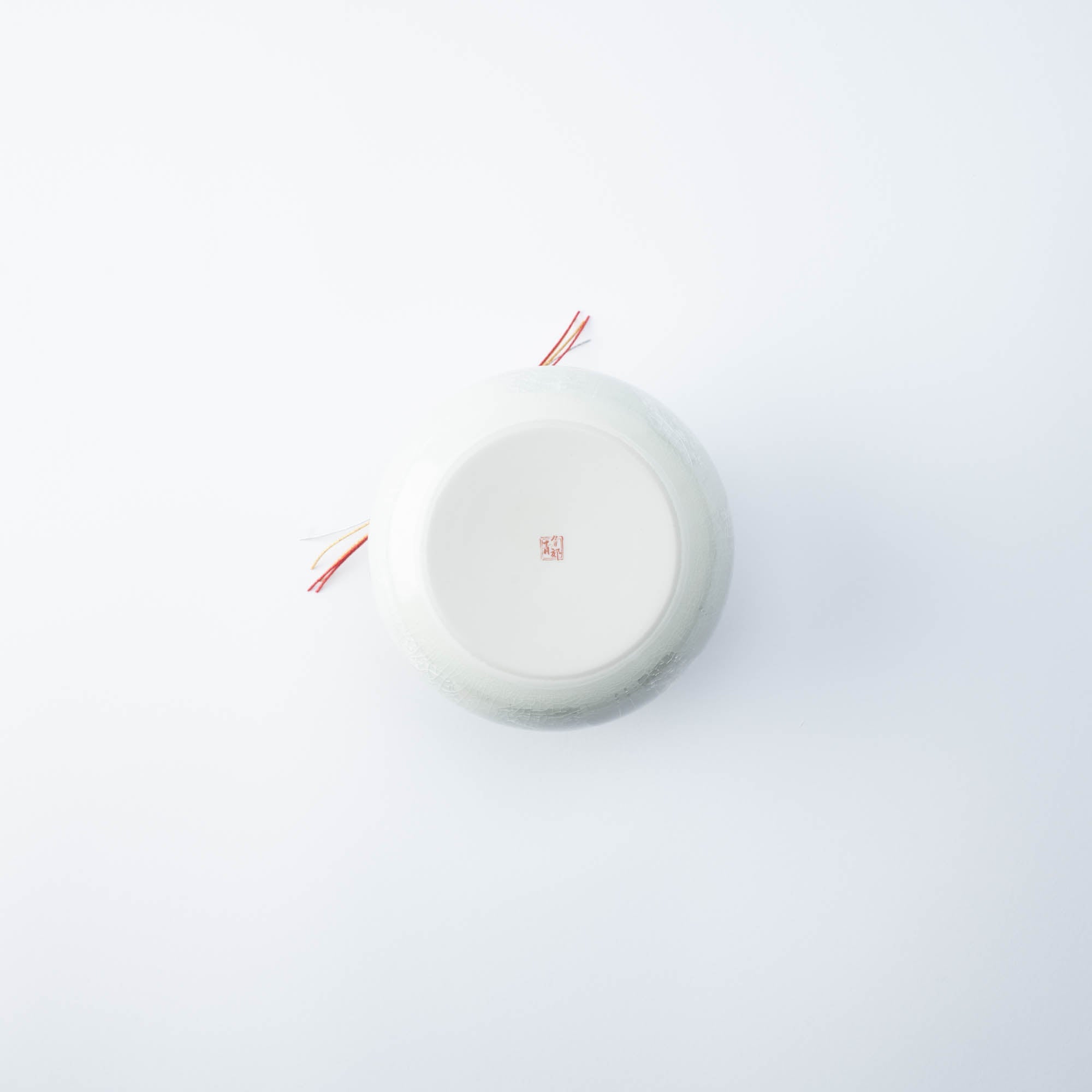
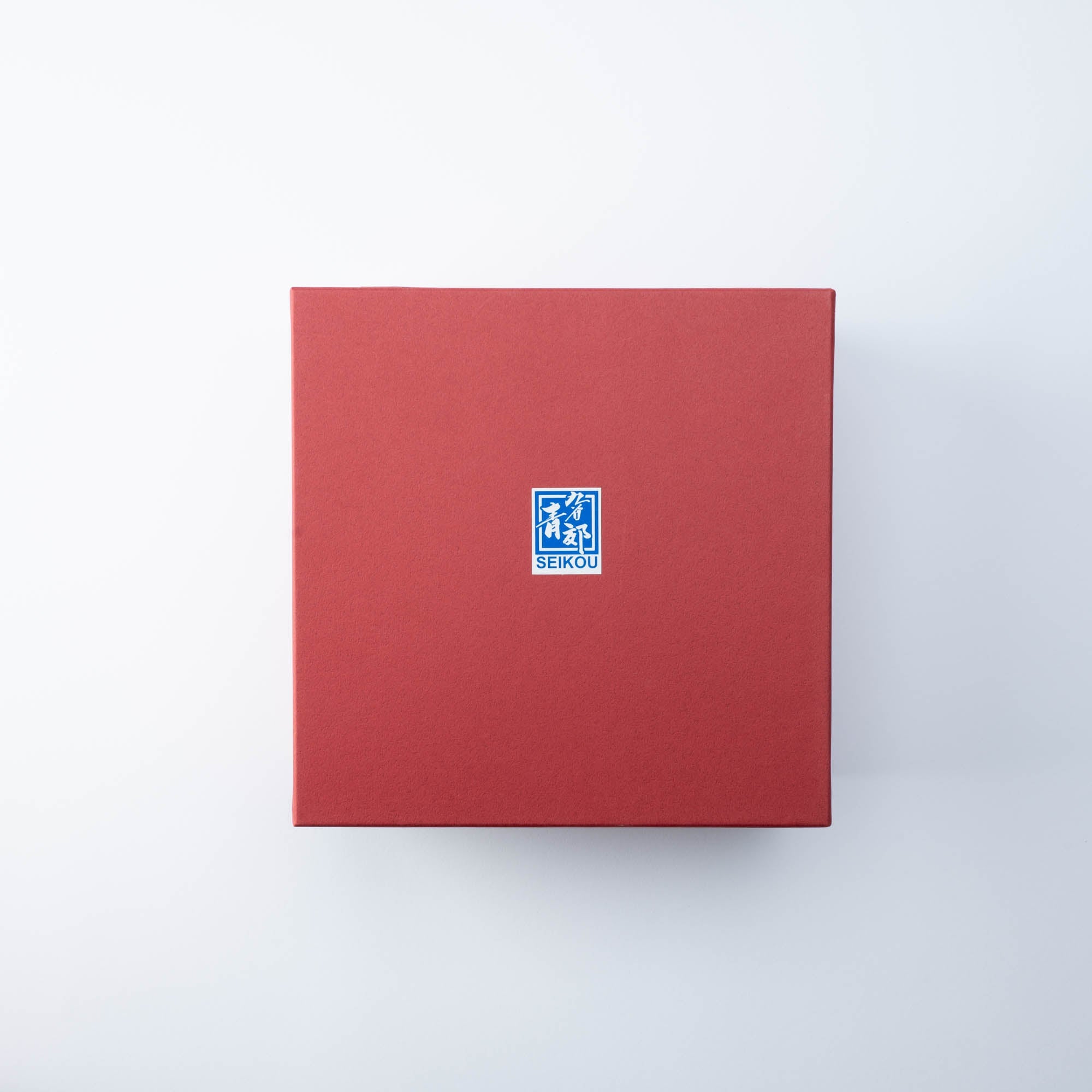
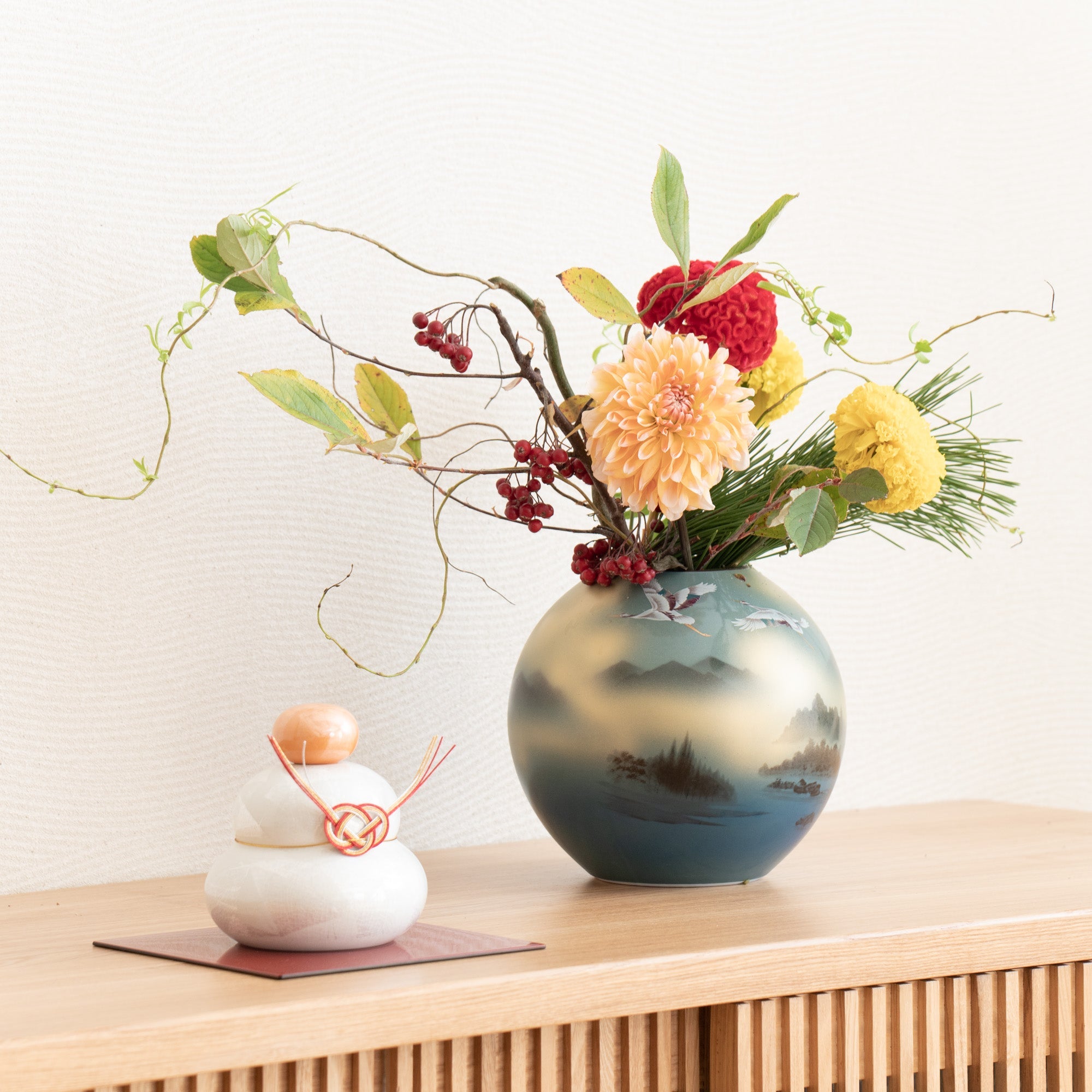
Ginsai Kagami Mochi
Estimated Shipping Widget will be displayed here!
Get your home ready for a new year with this striking ceramic kagami mochi, or “mirror rice cake.” Placed on a glossy red platform are three smooth, rounded shapes, finished with an ornate red and gold decorative knot called kaga-mizuhiki. Remove the orange piece on top to reveal a hollow interior, perfect for storing sweets, or keep it empty to fill with your wishes for 2024. Crafted with the Kutani ware technique, this particular item utilizes ginsai, in which silver leaf is added to the ceramic material before glazing. It adds a beautiful, unique texture to the three rounded tiers that will shimmer well past January.
Kagami mochi is a common sight in Japanese households as December 31st approaches. A good luck charm during the New Year holidays, it is placed at the family’s Shinto altar, in the kitchen, living room, or near the front door. It is said that the shape of the stacked mochi resembles a bronze mirror, which was a highly valuable household item in ancient Japan, hence the name kagami, or mirror.
Traditionally, kagami mochi is made with two rice cakes (or mochi) symbolizing the past year and the new year, and topped with a citrus fruit called daidai, which means “generations” and represents the passage of time. This Kutani ware version, being made of porcelain, can be set out year after year, serving as a beautiful symbol for the promise of a fresh new year.
This item is a beautiful representation of the elegant Kutani items that hail from Ishikawa Prefecture. Kutani ware, the technique that gives this piece its striking texture and shine originated in the area, and the finishing touch — the kaga-mizuhiki — is called Kaga after the ancient name for Ishikawa Prefecture. Give it a prominent place in your home to set the tone for next year with traditional Japanese flair.
DES DÉTAILS
| Quantity | 1 |
| Size |
D 11.5 cm (4.5 in) × H 12.5 cm (4.9 in) [Mat] L 17.2 cm (6.8 in) x W 17.2 cm (6.8 in) |
| Material | Porcelain, wood |
| Package Type | Paper box |
Fabricant / Marque
Le four Seikou, fondé au début de l'ère Taisho (1912-1926) à Nomi, dans la préfecture d'Ishikawa, se consacre depuis longtemps à l'art de la peinture sur glaçure japonaise pour la céramique de Kutani. Grâce à des années de recherche, le four a perfectionné une technique de haute qualité pour le transfert de motifs et de dessins à partir de feuilles imprimées en interne. Cette méthode préserve la transparence des glaçures vitreuses et la profondeur des peintures sur glaçure épaisses, obtenant ainsi la même richesse que la peinture traditionnelle à la main. Leur travail a reçu de prestigieuses distinctions, notamment lors du concours du « Charmant Souvenir Japonais » de l'Agence japonaise du tourisme.
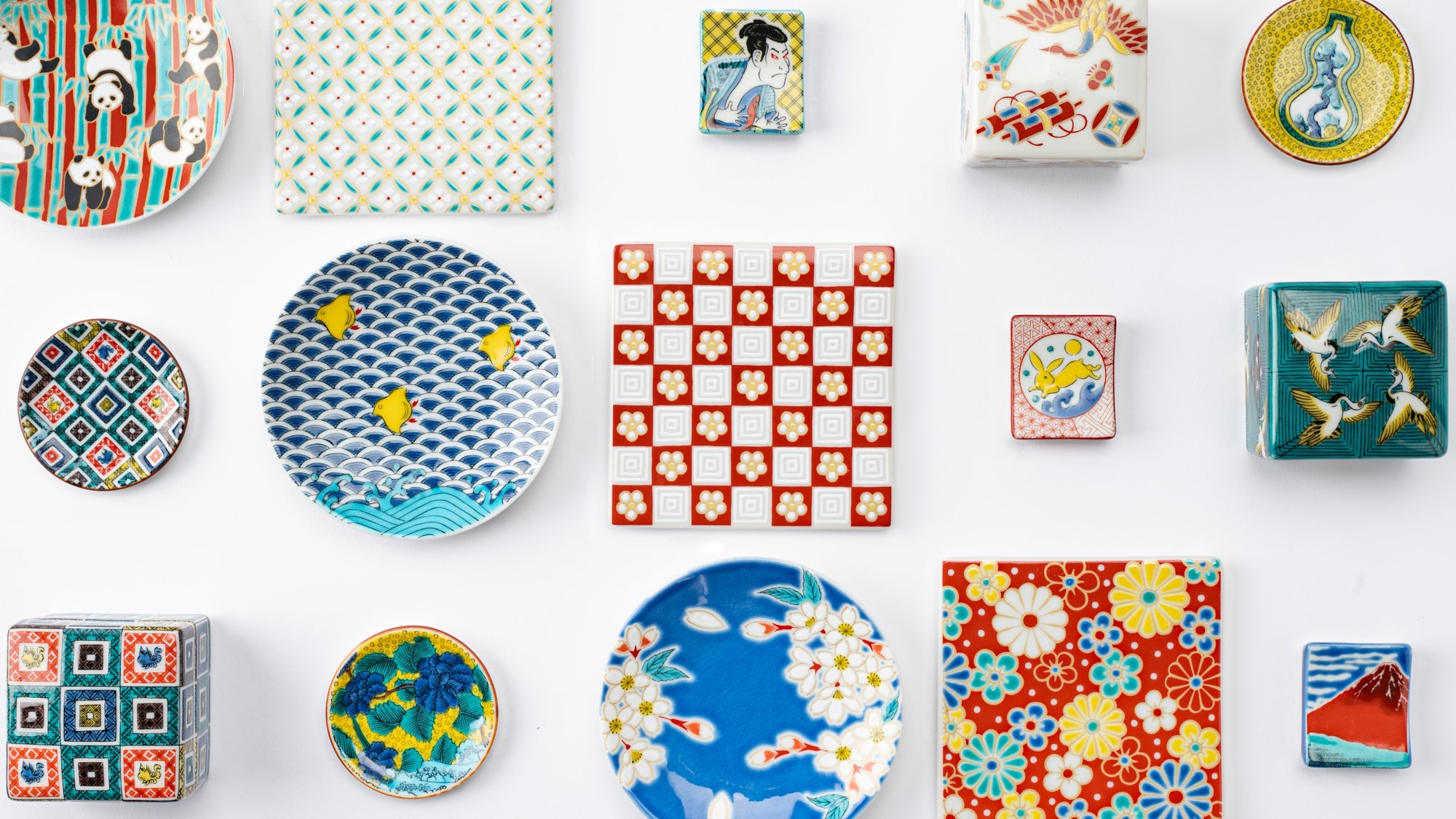
Artisanat
La céramique de Kutani est une poterie produite dans la région de Kaga, dans la préfecture d'Ishikawa, dont l'histoire remonte à plus de 350 ans. Elle se caractérise par l'éclat intense des cinq couleurs : bleu marine, rouge, violet, vert et jaune. qui s'appliquent aux lignes audacieuses et audacieuses. Sa longue histoire s'est développée grâce aux efforts inlassables et à l'enthousiasme de personnes qui ont recherché l'innovation tout en préservant la tradition.
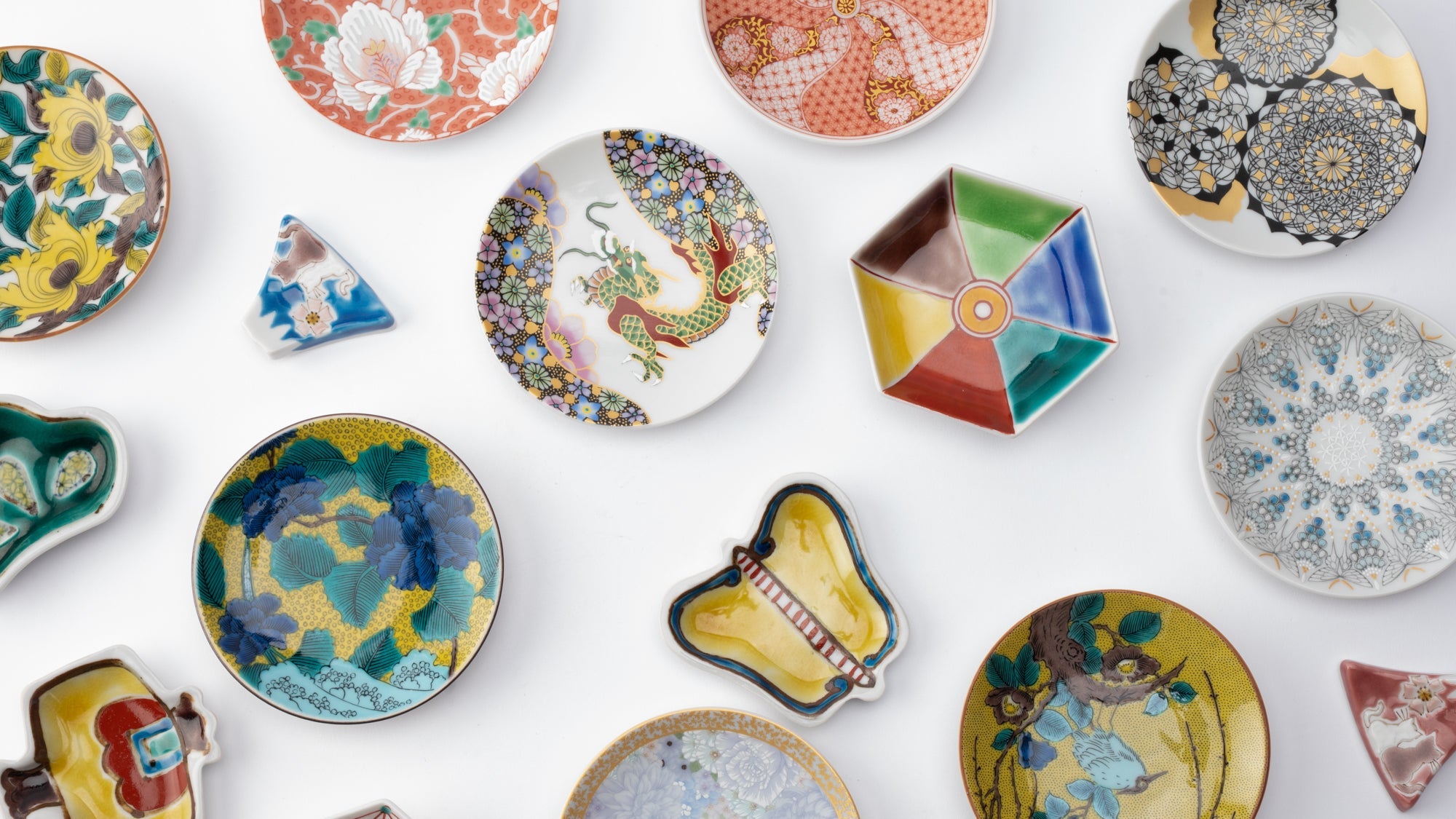
Choisir les options






















Poupées et décorations japonaises
Découvrez le charme intemporel des poupées et figurines japonaises, symboles d'un patrimoine culturel et d'un savoir-faire artisanal chéris depuis des générations. Notre collection de poupées japonaises soigneusement sélectionnées met en valeur de magnifiques détails peints à la main, des silhouettes élégantes et les traditions ancestrales qui inspirent leur création.
Chaque figurine transforme n'importe quel espace en un havre de beauté raffinée, invitant à une appréciation plus profonde du savoir-faire et de l'histoire qui rendent ces trésors de poupées japonaises si enchanteurs. Que vous soyez un collectionneur chevronné ou que vous découvriez ces icônes culturelles pour la première fois, notre sélection vous promet de vous imprégner de l'esprit et de la sérénité du Japon.
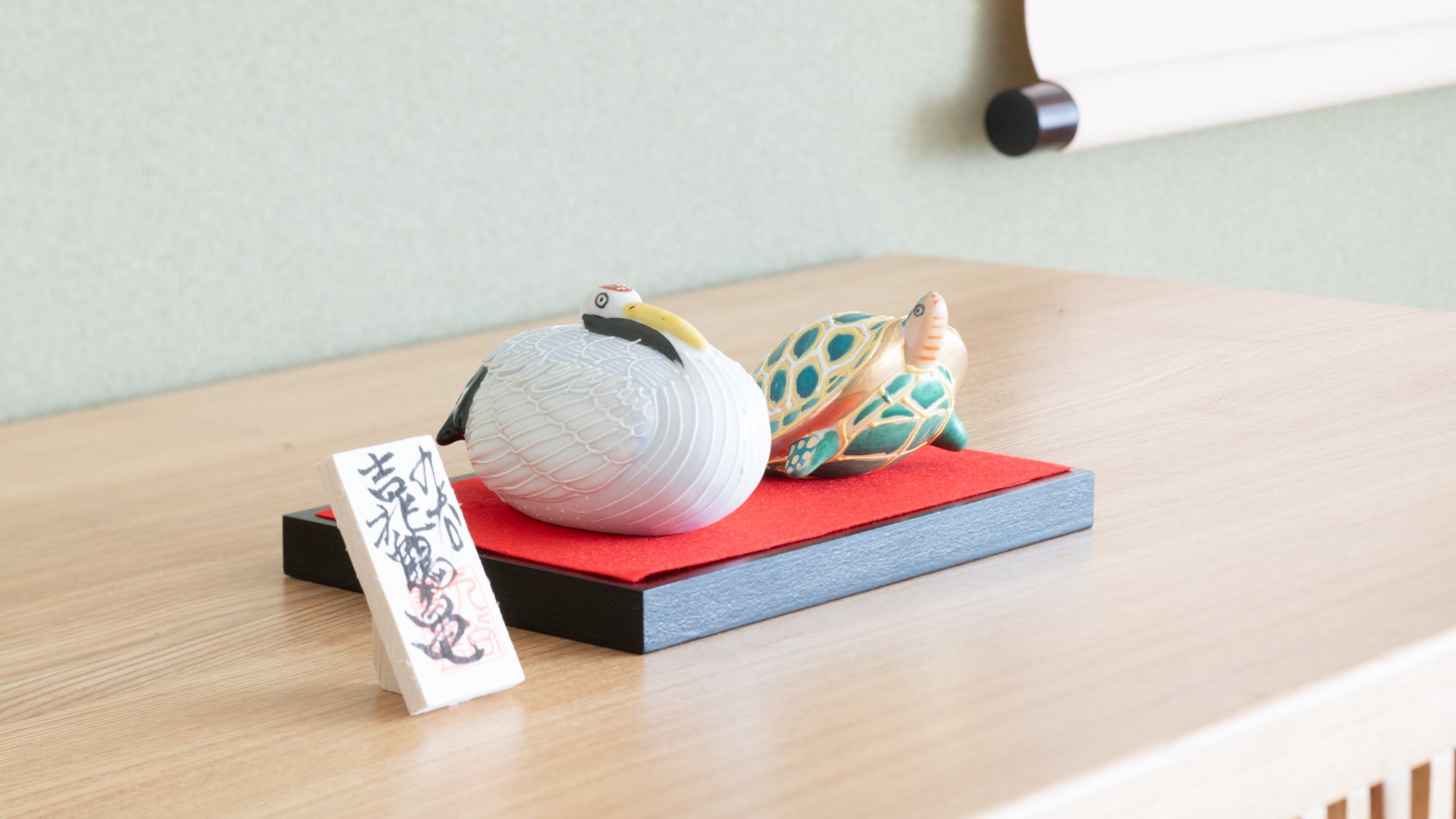
Collection du Nouvel An
Célébrez le Nouvel An avec de la vaisselle et des décorations japonaises authentiques, composées de laques brillantes et de porcelaines étincelantes. Des touches d'or et des motifs de bon augure subliment l'atmosphère, idéale pour accueillir les fêtes de fin d'année.
Cette collection comprend une variété d'articles, allant de magnifiques objets en laque jubako Des boîtes à bento aux objets décoratifs en porcelaine ornés de motifs festifs. Apportez chance et santé à votre intérieur et célébrez avec style grâce à ces pièces élégantes.
